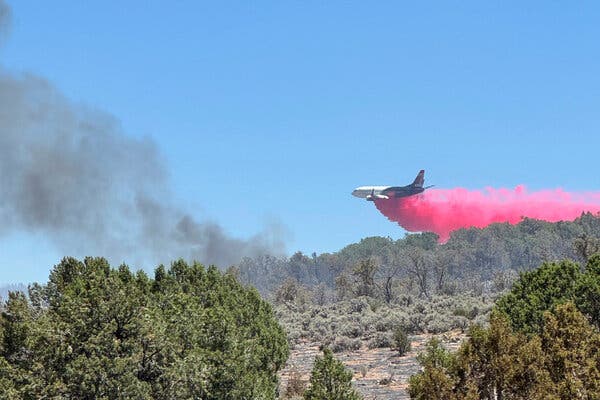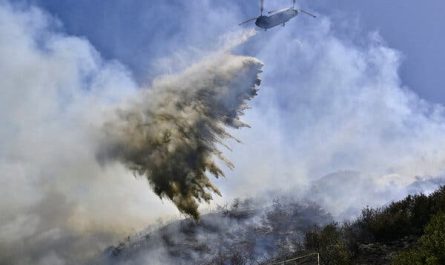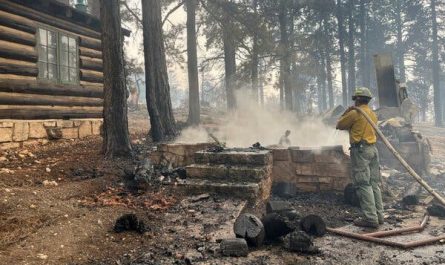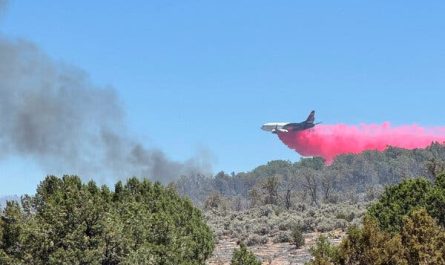A wildfire that was burning more than 19,000 acres on Saturday forced the National Park Service to close an access point to the Grand Canyon National Park during the busy summer tourist season, officials said.
A separate, smaller blaze inside the park led to a water treatment plant catching fire, resulting in the release of chlorine gas on Saturday, the Park Service said.
The larger fire, known as the White Sage fire, started on Wednesday evening with a lightning strike near Fredonia, Ariz., according to the Bureau of Land Management.
As of Saturday, the White Sage fire had burned 19,153 acres and was zero percent contained. “The fire continues to exhibit extreme behavior, being driven by steady winds in very hot and dry conditions,” the bureau said on Saturday night.
The access point to the park, the North Rim, was closed starting on Thursday, and all visitors had to evacuate, according to a National Park Service
news release
.
The access site remained closed to visitors until further notice, the
park said on Saturday on Facebook
. The North Kaibab Trail was temporarily closed north of Manzanita Rest Area.
The North Rim is open seasonally and draws 10 percent of the visitors to the Grand Canyon. In 2024, nearly five million people visited the park.
The smaller fire, known as the Dragon Bravo fire, was burning 5,000 acres inside of the Grand Canyon National Park. That fire started on July 4, also ignited by lightning,
according to a wildfire tracking website
.
Firefighters responding on Saturday to the Dragon Bravo Fire reported that the North Rim water treatment plant caught fire, the park said in a statement, and it later confirmed that chlorine gas had been released from the plant.
“Chlorine gas is heavier than air and can quickly settle into lower elevations, such as the inner canyon, posing a health risk,” the park said. “Due to the risk of exposure, park authorities immediately evacuated firefighters from the North Rim and hikers from the inner canyon, and closed access to specific areas within the inner canyon.”
The North Kaibab Trail, Phantom Ranch, and the South Kaibab Trail were all closed pending a further assessment.
The park said that the chlorine gas did not pose a critical threat to nearby communities but that residents in Marble Canyon, Lees Ferry, and a small area of the Navajo Nation may smell chlorine.
Containment of the Dragon Bravo fire on Sunday was at zero percent. Smoke from the fire was visible from the South Rim, the park’s more popular access point, which remained open.




